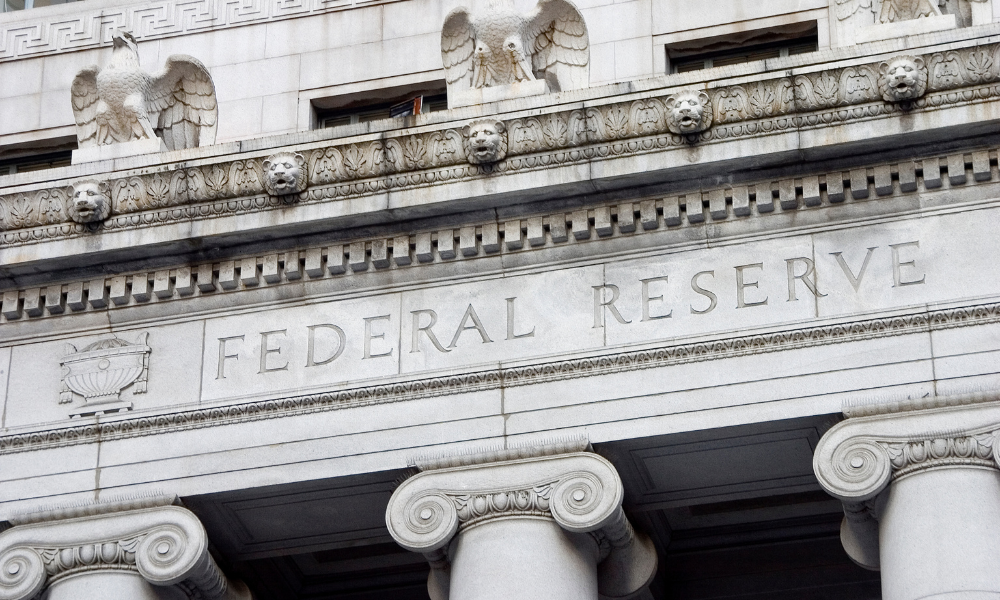Trump-appointed Fed governors challenge Powell with push for rate cut

Two governors appointed by US President Donald Trump are expected to break with the majority of the US Federal Reserve in a rare double dissent, pushing for a rate cut as the central bank holds US interest rates steady for the fifth consecutive meeting.
As per analysts cited by Reuters, Christopher Waller and Michelle Bowman are forecast to vote in favour of a 25-basis-point cut, marking the first dual opposition from US governors since 1993.
Both have expressed concerns over weakening US labour market conditions, with Waller warning that private-sector job growth is nearing stall speed.
Bowman has echoed these worries, arguing a rate cut may be needed to prevent further deterioration.
According to City News, the US Federal Reserve is likely to keep its benchmark interest rate unchanged during its two-day meeting concluding Wednesday.
This decision comes despite internal divisions and mounting pressure from Trump, who continues to criticise Fed Chair Jerome Powell’s refusal to lower borrowing costs.
US inflation remains a central concern.
Data cited by The Washington Post shows inflation accelerated to 2.7 percent in June from 2.4 percent in May, with core prices rising to 2.9 percent from 2.8 percent.
Reuters reported that a surge in US consumer prices for furnishings and apparel helped drive annualised inflation to 3.5 percent last month.
Chicago Fed President Austan Goolsbee said fast-rising prices could “freak out” households and spark a wider inflationary spiral.
Still, most policymakers see inflation risks as outweighing the US labour market slowdown.
Boston Fed President Susan Collins told The Washington Post that solid economic conditions support an “actively patient” approach, allowing the US central bank to carefully assess a broad range of data before adjusting policy.
As reported by CNBC, Trump has maintained that high rates are undermining his economic agenda.
He has called for drastic cuts, claiming there is “no inflation” and pressing for the policy rate to drop to one percent—well below the 3.6 percent the Fed has projected for the end of 2025.
Trump and Powell confronted each other publicly last week over the rising cost of the Fed’s building renovation project, fuelling speculation over whether Trump might attempt to fire Powell for cause.
Waller and Bowman’s support for a rate cut is driven by different reasoning than Trump’s.
Waller argued in a speech earlier this month that while the US economy is still growing, its momentum has slowed, and the risk of rising unemployment has increased.
Both governors believe tariffs will result in only a one-time price bump, not sustained inflation.
Trump’s criticism of the Fed’s closed-door meetings took legal form when investment fund Azoria Capital, led by Trump ally James Fishback, filed a lawsuit seeking to force the US Federal Reserve to open its policy meetings to the public.
As reported by CNBC, US District Judge Beryl Howell rejected the bid, noting Azoria’s court filings referenced media interviews—raising questions about whether the suit was a publicity strategy.
Despite the legal setback, Fishback stated that Azoria would continue its case, arguing that joint meetings between the Federal Open Market Committee (FOMC) and the Board of Governors may be designed to sidestep the Sunshine Act and limit public oversight.
Meanwhile, US economic indicators present a mixed picture.
According to Reuters, the Commerce Department is expected to report a rebound in second-quarter growth, with nominal US GDP surpassing US$30tn.
However, EY-Parthenon’s Gregory Daco warned that “tariff-induced cost pressures, persistent policy uncertainty, severely curtailed immigration, and elevated interest rates” are all contributing to weaker employment, investment, and household spending.
US consumer demand remains steady.
As per data from the JPMorganChase Institute cited by Reuters, household cash reserves have improved, especially when brokerage and certificate of deposit accounts are considered.
Bank credit to consumers and businesses is also up for the first time in over two years, and Dallas Fed data shows loan volume and demand began rising in late May.
Manufacturing output in the US grew at an annualised 2.1 percent in the second quarter, slowing from 3.7 percent in the first, with capacity utilisation ticking up slightly.
However, business investment signals caution, with non-defence capital goods orders excluding aircraft falling 0.7 percent in June.
The US housing sector continues to drag.
Reuters reported that construction spending has declined for nine consecutive months—a streak not seen since the 2007–2009 financial crisis.
New single-family home starts in June were the lowest in nearly a year, while sales of new and existing homes remain weak.
Citi economists noted that “weak housing demand is convincing evidence that rates are still restrictive,” suggesting that elevated mortgage rates and labour market uncertainty are weighing on the sector.



